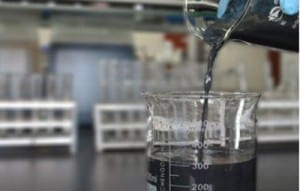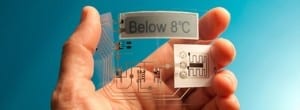Understanding rheological properties are critical for industries working with electronic materials, from printable electronics to conductive and resistive pastes to slurries and inks for batteries and fuel cells. These materials are notoriously difficult to measure with simple viscometers. The need for viscosity measurements across a range of shear conditions, in combination with yield stress, thixotropy and viscoelasticity information, necessitates the need for high-performance rheometers. Our expert profiling, benchmarking, and competitive comparisons can help you optimise your product development, process, production and quality assurance.
Get a quotation for sample measurement.
Rheology profiling methods for electronic materials
We can provide the following suite of measurements for electronic coatings, inks, pastes and thermal materials:
- Viscosity: Pastes and suspensions exhibit significantly non-Newtonian behaviour. Specifically, they display pseudoplastic viscosity profiles, where viscosity is higher at low shear stresses or rates but decreases as shear stress or shear rate increases. Therefore, a simple single-point measurement, such as would be performed on a viscometer, is insufficient to capture this behaviour.
- Yield stress: The soft-solid colloidal gel structure strength resulting from particle and/or polymer interactions.
- Zero-shear viscosity: A special case of viscosity – the viscosity of the paste when exposed to stresses below the yield stress. Zero-shear viscosity is a crucial determinant of creep, sag and slump resistance and suspension stability.
- Thixotropic recovery rate: The rapidity with which zero-shear viscosity and yield stress recover following the cessation of shearing.
- Viscoelasticity: Viscoelastic behaviour has been shown to predict dispersion quality for electrode pastes. Furthermore, viscoelastic behaviours can predict the coatability of inks and slurries at higher coating speeds.
Rheology of Anode and Cathode Pastes and Slurries
The rheology of electrode slurries and pastes is critical for  lithium-ion cell manufacturing processes, such as extrusion, slot-die coating, calendering and screen printing. For these materials, it is necessary to have a flowable product that can be mixed, pumped and coated with ease but that also rapidly recovers to prevent sagging and slumping of deposited materials. Variables such as active material particle size and size distribution and concentration and molecular weight of additives and dispersing agents significantly impact the viscosity and rheology of binders and finished electrode pastes.
lithium-ion cell manufacturing processes, such as extrusion, slot-die coating, calendering and screen printing. For these materials, it is necessary to have a flowable product that can be mixed, pumped and coated with ease but that also rapidly recovers to prevent sagging and slumping of deposited materials. Variables such as active material particle size and size distribution and concentration and molecular weight of additives and dispersing agents significantly impact the viscosity and rheology of binders and finished electrode pastes.
Rheology Profiling for Printed Electronics
 Printed electronics applications and their associated processes demand materials with highly-defined rheological properties. For screen-printed electronics for, for example, sensors and diagnostics, the following behaviours and attributes are critical:
Printed electronics applications and their associated processes demand materials with highly-defined rheological properties. For screen-printed electronics for, for example, sensors and diagnostics, the following behaviours and attributes are critical:
- Mesh flow back
- Sagging and slumping
- Track retention
- Dispersion quality
- Shelf life
- Stability of conductive & resistor pastes
Inkjet-printed conductive materials must have a suitably low viscosity to enable jetting but also must maintain their shape and position once onto the substrate. Furthermore, visco-elastic characteristics can impede droplet formation, leading to poor print quality and misting.
Rheology of Thermal Interface Materials
The rheology of a thermal interface material (TIM) is critical to its effective handling, application and performance. Rheology plays a significant part in the following areas:
- Deposition: The ability to dispense material is determined by yield stress, viscosity at dispensing shear rates, thixotropic breakdown rate and recovery rate.
- Thermal contact: The rheology of a TIM must be such that, on the application of force as the heatsink is pushed into place, the TIM fills any air voids, reduces the bond line thickness and maximises contact area with the component and heatsink. Yield stress plays a significant role in this; the force pushing the heatsink into place is spread across the area of the TIM. A TIM with a lower yield stress would spread more easily under a given force, leading to a smaller bond line thickness and better fill voids.
- Temperature-related pump out: Under multiple heat and cooling cycles, expansion and contraction of the heatsink and device result in pumping effects that tend to evacuate the gap between the device and heatsink of TIM. A high low-shear/zero-shear viscosity, high yield strain (resulting in large recoverable elastic deformations) and good wetting characteristics are expected to contribute to good pump-out resistance.
